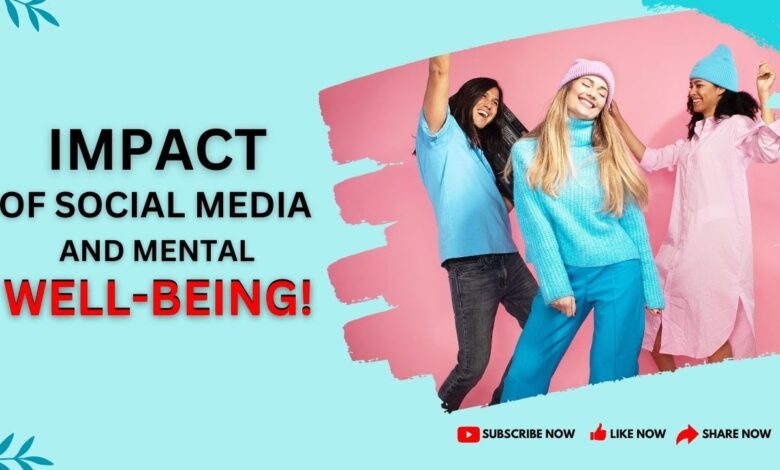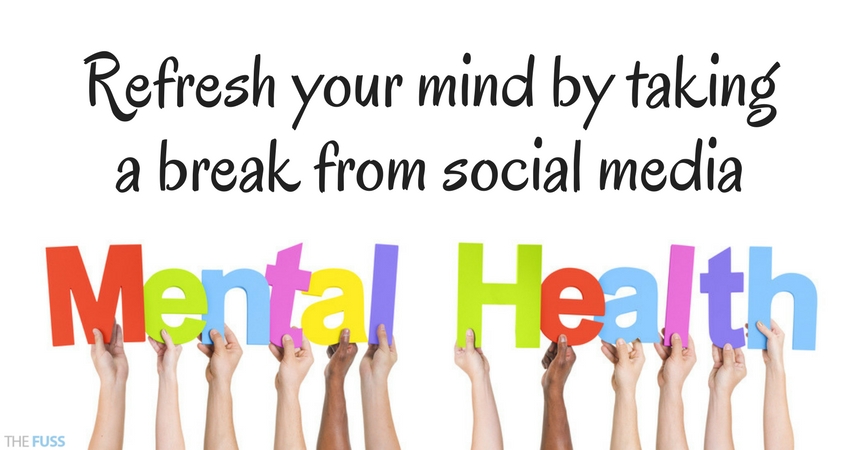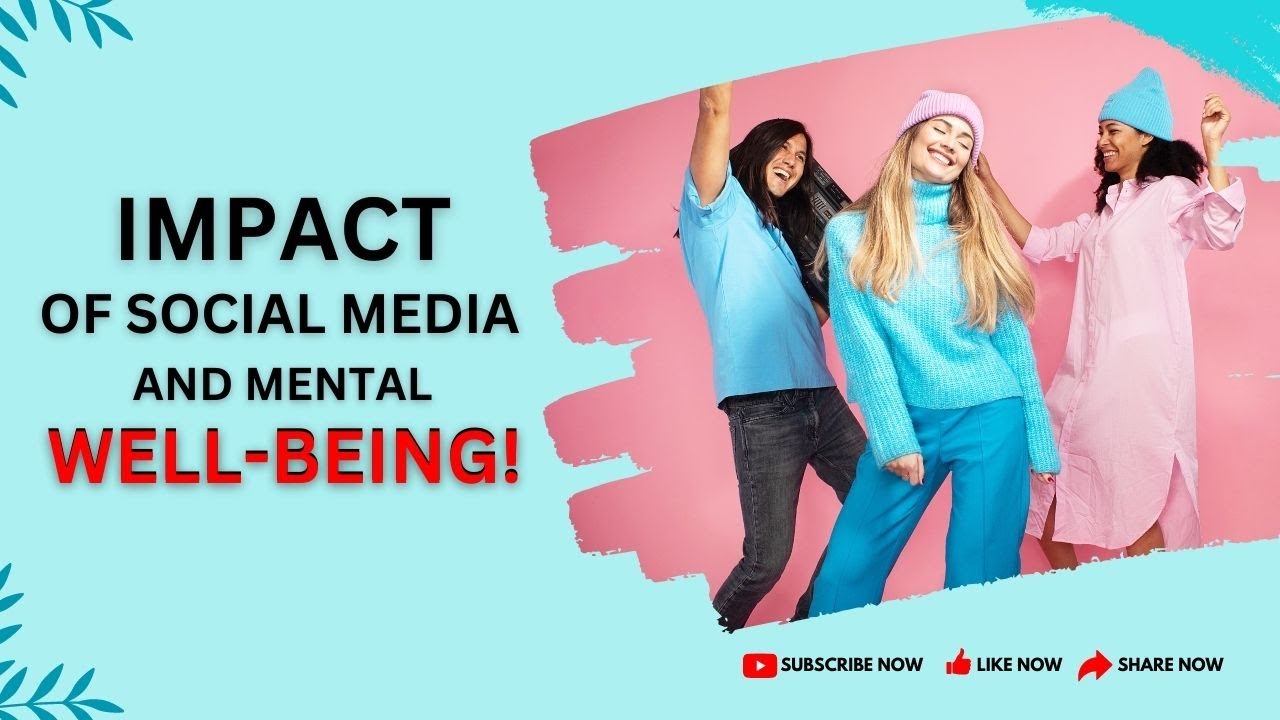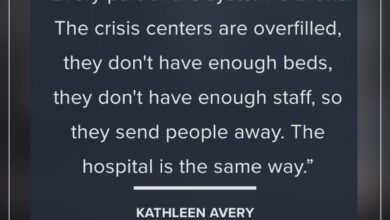
Ditching social media for just 1 week can boost your mental health, offering a refreshing escape from the constant barrage of curated content and comparisons. This digital detox allows you to reconnect with yourself, rediscover passions, and experience a renewed sense of peace. We’ll explore how a temporary break can positively impact your well-being, offering practical strategies and actionable steps for a successful experience.
This article dives into the potential benefits of intentionally reducing social media use for a week, examining its effects on mental health. We’ll analyze the common negative impacts of excessive social media use, provide practical strategies for a successful detox, and discuss the long-term implications of maintaining a healthy relationship with these platforms. Prepare to embark on a journey toward a more balanced and fulfilling digital life.
Introduction to Digital Detox
Unplugging from the digital world can feel daunting in our hyper-connected society. Yet, intentionally stepping away from social media can offer surprising benefits for mental well-being. This week-long digital detox experiment will explore how a temporary break from the constant barrage of notifications and curated online personas can positively impact our mental health. A simple act of disconnecting can lead to a more present and mindful existence.A digital detox is intentionally reducing or eliminating social media use for a set period.
It’s not about abandoning technology entirely, but rather about recognizing the potential negative impact of excessive social media engagement and proactively choosing to disconnect. By consciously stepping away from these platforms, individuals can create space for activities that nurture mental well-being, such as spending time in nature, engaging in hobbies, or fostering deeper connections with loved ones.
Social Media Platforms and Potential Impacts
Social media platforms vary in their structure and function, influencing user engagement and potential negative impacts. Understanding these differences can help individuals make informed choices about their digital habits.
| Platform Name | Typical User Engagement | Potential Negative Impacts on Mental Health |
|---|---|---|
| Often used for maintaining connections with friends and family, sharing personal updates, and participating in group discussions. | Comparison with others’ curated lives, feelings of inadequacy, cyberbullying, and addictive behaviors. | |
| Primarily focused on sharing visually appealing content, often highlighting curated lifestyles and achievements. | Social comparison, body image issues, feelings of inadequacy, anxiety, and depression. | |
| Used for news updates, political discourse, and sharing opinions. | Exposure to negativity and conflict, cyberbullying, echo chambers, and heightened emotional reactivity. | |
| TikTok | Known for short-form video content, often featuring entertainment, trends, and challenges. | Comparison with others’ lives, unrealistic beauty standards, pressure to keep up with trends, and feelings of inadequacy. |
Understanding the Impact on Mental Health
Social media has become an undeniable part of modern life, connecting us in ways never before possible. However, this constant connectivity comes with a complex interplay of benefits and drawbacks, particularly concerning our mental well-being. This section delves into the potential negative impacts of excessive social media use, examining the effects on anxiety, depression, and self-esteem, as well as the cognitive distortions and biases it can amplify.
It also explores the difference in reported stress and self-perception between frequent and infrequent social media users.Excessive social media use can negatively impact mental health in several ways. A constant stream of curated content can create unrealistic expectations about appearance, success, and relationships, leading to feelings of inadequacy and low self-esteem. The pressure to maintain a perfect online persona can be overwhelming, triggering anxiety and depression.
Furthermore, the constant exposure to potentially upsetting or emotionally charged content can contribute to stress and negatively affect mood.
Negative Effects on Mental Well-being
Social media platforms often foster a culture of comparison. Users frequently encounter idealized versions of others’ lives, leading to feelings of inadequacy and dissatisfaction with their own reality. This phenomenon can manifest in various ways, impacting self-esteem and potentially triggering or exacerbating mental health issues like anxiety and depression. The pressure to maintain a positive online image can lead to significant stress, and the fear of missing out (FOMO) can contribute to feelings of isolation and loneliness, even when surrounded by others.
Cognitive Distortions and Biases
Social media algorithms often amplify confirmation bias, showing users content that aligns with their existing beliefs and opinions. This can lead to echo chambers, where users are rarely exposed to alternative perspectives, thus reinforcing existing viewpoints and potentially hindering critical thinking. Furthermore, the curated nature of social media content can lead to a distorted perception of reality. Users may be bombarded with highly edited or idealized portrayals of others’ lives, fostering unrealistic expectations and impacting self-perception.
Comparison of Social Media Use and Mental Health
Individuals who frequently use social media often report higher levels of stress and lower self-esteem compared to those who rarely use it. This difference is often attributed to the pressures of maintaining a positive online presence, the constant exposure to idealized content, and the amplified feelings of inadequacy and comparison. Frequent social media users may experience more anxiety and depression as a result of the distorted perception of reality presented on these platforms.
Taking a break from social media for a week can seriously improve your mental well-being. It’s like giving your brain a much-needed reset. Similar to how certain genetic diseases, like pompe disease and similar genetic diseases , can impact our physical health, constant social media scrolling can negatively affect our mental health. Ultimately, disconnecting for a week can be a powerful tool for a healthier, happier you.
Conversely, individuals who rarely use social media may experience less stress and a more grounded sense of self-worth.
Impact of Specific Social Media Activities
| Social Media Activity | Examples | Likely Emotional or Psychological Impact |
|---|---|---|
| Comparison with others’ lives | Scrolling through photos of friends’ vacations, idealized posts about career success | Low self-esteem, feelings of inadequacy, anxiety, depression |
| Exposure to negativity | Reading news articles, comments on controversial posts | Stress, anxiety, irritability, potentially triggering existing mental health conditions |
| Cyberbullying and harassment | Receiving hurtful comments, threats, or insults | Severe anxiety, depression, social isolation, trauma |
| Excessive use/addiction | Spending hours on social media daily, neglecting responsibilities | Distraction from real-life relationships and responsibilities, anxiety, depression, decreased productivity |
| FOMO (Fear of Missing Out) | Seeing friends enjoying themselves in posts, feeling left out | Anxiety, stress, feelings of inadequacy, social isolation |
Strategies for a Successful Digital Detox
Taking a break from social media can be incredibly beneficial for your mental well-being. This period of disconnection allows you to reconnect with yourself and your surroundings, fostering a sense of calm and clarity. A well-structured detox plan can make this transition smoother and more effective.A digital detox isn’t just about turning off notifications; it’s about consciously shifting your focus and re-evaluating your relationship with technology.
It’s about creating space for activities that nourish your mind, body, and spirit. This section will provide a roadmap to navigate this process effectively.
Creating a Personalized Detox Plan
A personalized plan is crucial for a successful digital detox. It caters to your specific needs and preferences, ensuring the process aligns with your lifestyle and goals. A one-size-fits-all approach rarely yields optimal results.A step-by-step guide can help you create your personalized plan:
- Define your goals: Why do you want to take a digital detox? Do you want to reduce stress, improve focus, or simply spend more time in nature? Clearly identifying your motivations will keep you focused and engaged during the detox.
- Assess your current social media usage: Track how much time you spend on each platform. Understanding your habits provides a baseline for comparison and helps you set realistic goals.
- Establish clear cut-off dates: Set a start and end date for your detox. A defined timeframe provides structure and motivation.
- Identify alternative activities: Brainstorm activities that you enjoy and that do not involve social media. Examples include reading, spending time in nature, pursuing hobbies, or engaging in creative projects.
- Communicate your plan: Inform your friends and family about your detox to minimize interruptions and support.
- Designate specific times for checking in: If you need to check social media for work or other critical reasons, schedule these times to avoid constant distractions.
Coping with Withdrawal Symptoms
Withdrawal symptoms, such as feelings of anxiety or restlessness, are possible during a digital detox. Understanding these potential responses helps you prepare and address them effectively.These strategies can help mitigate withdrawal symptoms:
- Mindfulness and meditation: Practicing mindfulness and meditation can help manage feelings of anxiety or restlessness that may arise during the detox.
- Engage in physical activity: Exercise is a powerful stress reliever and can help distract from the urge to check social media.
- Connect with loved ones: Spending quality time with family and friends provides social interaction without relying on social media.
- Engage in hobbies: Rediscovering or exploring hobbies can occupy your time and provide a sense of accomplishment.
Staying Connected and Engaged
Staying connected and engaged during your detox is essential to maintain your well-being. It is possible to maintain relationships and participate in social activities without social media.Several methods for staying connected without relying on social media include:
- Phone calls and video chats: Scheduling phone calls and video chats with friends and family allows for meaningful interaction and connection.
- In-person meetings: Plan gatherings or outings with friends and family to strengthen your relationships.
- Traditional communication methods: Sending letters or postcards to loved ones can create a personal and meaningful connection.
- Community involvement: Joining clubs, volunteering, or participating in local events can provide social interaction and a sense of belonging.
Replacing Social Media Activities
Replacing social media-related activities with healthier alternatives is a crucial aspect of a successful detox. This strategy ensures a smooth transition and fosters positive habits.Identifying and replacing these activities involves:
- Identifying activities that are social media-driven: Recognizing the triggers that lead to social media usage is vital.
- Replacing these activities with healthy alternatives: For example, if you use social media to stay updated on news, consider subscribing to print newspapers, or engaging with news sources that do not rely on social media.
Practical Examples of a One-Week Detox
Taking a break from social media can feel daunting, but it’s surprisingly achievable. A one-week detox can offer a much-needed reset, allowing you to reconnect with yourself and the world around you, free from the constant notifications and curated feeds. This section details a practical approach, outlining a sample daily schedule and alternative activities, to help you successfully navigate this digital break.
A Sample Daily Schedule for a One-Week Social Media Detox
A structured schedule can make a digital detox more manageable. This sample schedule is designed to be adaptable, allowing you to tailor it to your specific needs and preferences. Remember, consistency is key. Sticking to a schedule, even if you have minor adjustments, is crucial for a successful experience.
| Day of the Week | Activities | Reasons for Choosing Activities |
|---|---|---|
| Monday | Morning walk, reading a book, catching up with a friend, journaling. | Starting the week with physical activity, followed by quiet reflection and personal connection. |
| Tuesday | Cooking a healthy meal, spending time in nature, learning a new skill (e.g., photography). | Focus on self-care and exploration. |
| Wednesday | Volunteering at a local organization, attending a workshop, practicing a hobby (e.g., painting). | Connecting with the community and developing a new skill. |
| Thursday | Spending quality time with family, playing a board game, doing a home improvement project. | Strengthening relationships and engaging in creative or productive tasks. |
| Friday | Going for a bike ride, listening to music, relaxing at home, watching a documentary. | Enjoying the outdoors, unwinding, and engaging in stimulating learning. |
| Saturday | Visiting a museum, attending a concert, meeting friends for coffee, learning about local history. | Exploring the community, connecting with people, and learning something new. |
| Sunday | Relaxing at home, reading, spending time with loved ones, planning the week ahead. | Rest and reflection before starting the week again. |
Alternative Activities to Fill Time Previously Spent on Social Media
Replacing social media time with engaging activities is vital for a successful detox. Here are some suggestions:
- Engage in hobbies: Pick up an old hobby, like painting, knitting, or playing a musical instrument. Rediscover forgotten passions or explore new ones. The sense of accomplishment from engaging in a creative pursuit can be incredibly fulfilling. For example, spending an hour painting each day can be a very rewarding activity.
- Connect with loved ones: Schedule phone calls or video chats with family and friends. Deepen relationships and create lasting memories. The importance of these connections is often underestimated.
- Learn something new: Explore online courses, take up a new language, or read a book on a subject that interests you. Expanding your knowledge and understanding the world around you can be deeply enriching. For example, exploring a historical book can expand your knowledge and perspectives.
- Explore your local community: Visit museums, parks, or local events. Engage with your surroundings and discover hidden gems in your area. Discovering hidden places in your area is a great way to spend time.
Using Previous Social Media Time for Productive or Relaxing Activities
Instead of passively scrolling, use the time previously spent on social media for more active and rewarding pursuits.
- Mindfulness and meditation: Practice mindfulness or meditation techniques to improve focus and reduce stress. Using this time for self-care can be a powerful way to boost your mental well-being.
- Exercise or physical activity: Go for a run, take a walk, or engage in any physical activity you enjoy. Moving your body is a great way to improve your physical and mental health.
- Reading: Delve into a book, magazine, or article. Expanding your knowledge and perspective through reading is a wonderful way to spend your time.
Addressing Potential Challenges
Taking a break from social media can be a powerful step toward improved mental well-being, but it’s crucial to acknowledge that the journey isn’t always smooth. Potential obstacles, from the subtle pressure of social interactions to the more ingrained habits of digital addiction, can emerge. Understanding these challenges and developing strategies to navigate them is key to a successful and sustainable digital detox.Navigating the complexities of a digital detox requires acknowledging the various hurdles that might arise.
The sheer amount of information and communication available online can make it seem impossible to disconnect. Recognizing these obstacles is the first step toward overcoming them.
Common Obstacles to a Digital Detox
Social pressure and the fear of missing out (FOMO) are significant deterrents to digital detoxing. People feel compelled to stay connected to stay updated on current events and conversations. Furthermore, deeply ingrained digital habits, often forming a part of our daily routines, can make disconnection feel challenging. This is particularly true for those who are addicted to social media.
Recognizing these hurdles allows for a more realistic approach to overcoming them.
Taking a break from social media for just a week can be surprisingly good for your mental well-being. It’s like detoxing your mind, allowing you to focus on yourself and disconnect from the constant barrage of curated content. This, in a way, mirrors the need for a break from harmful substances, as seen in the burgeoning secondary drug industry booming amid the opioid epidemic here.
Ultimately, a digital detox can be a powerful tool for prioritizing mental health, just like seeking support for substance abuse is crucial for overall well-being.
Strategies to Overcome Obstacles
Developing a clear plan and communicating it to those around you is essential. This includes informing friends and family about your detox, allowing them to understand your intentions and support your choices. Creating a structured schedule, or even just a daily log, for non-digital activities can help you maintain focus and prevent cravings. Scheduling specific times for social media use, even if limited, can help maintain a sense of control.
Support Systems for a Digital Detox
Building a supportive network is critical for a successful digital detox. This could include friends, family members, or even support groups. Sharing your intentions and experiences with trusted individuals can provide encouragement and accountability. Joining online communities dedicated to digital detoxing can offer invaluable peer support and motivation. This support network can provide a safe space to share experiences, and build connections that are not dependent on social media.
| Support System Category | Description |
|---|---|
| Friends & Family | Sharing your intentions and experience with trusted individuals can provide encouragement and accountability. |
| Online Communities | Joining online communities dedicated to digital detoxing can offer invaluable peer support and motivation. |
| Therapy/Counseling | Professional guidance can be invaluable in addressing underlying issues that may contribute to digital dependence. |
Setting Realistic Expectations, Ditching social media for just 1 week can boost your mental health
Expecting immediate and dramatic improvements is often unrealistic. A digital detox is a journey, not a destination. Acknowledge that there will be moments of difficulty and setbacks. Focusing on the positive changes, big or small, can help maintain motivation. Allow yourself to adjust your plan as needed.
A gradual reduction in time spent on social media can be more sustainable than an abrupt cessation. Accepting that there will be ups and downs is crucial for maintaining motivation.
Taking a break from social media for a week can seriously improve your mental well-being. It’s amazing how disconnecting from constant online stimulation allows your mind to reset. And if you’re looking for creative ways to combat feelings of low mood, consider exploring DIY depression therapy, like using art to express yourself. For example, check out DIY depression therapy how the arts can heal for some fantastic ideas.
Ultimately, finding healthy outlets, whether through disconnecting or creative expression, is key to a more positive and balanced mental state. This social media detox is a great first step.
Building a Strong Support System
A strong support system is vital for a successful digital detox. This includes people who understand your goals and can provide encouragement and accountability. They can help you navigate challenges and maintain your focus. Having a network of friends, family, or support groups can significantly improve your chances of success. They can offer assistance, guidance, and emotional support.
Sharing your struggles and triumphs with this network will foster a positive environment.
Long-Term Implications and Maintenance: Ditching Social Media For Just 1 Week Can Boost Your Mental Health

Taking a break from social media for a week can be a powerful first step toward a healthier relationship with technology. However, the real benefits lie in how you sustain those changes. This phase focuses on long-term strategies for maintaining a healthy digital footprint, preventing relapse, and weaving reduced social media use seamlessly into your daily life.The initial detox acts as a valuable trial run.
It reveals personal patterns and sensitivities. The long-term success hinges on integrating these learnings into a sustainable routine. This involves acknowledging the psychological and practical aspects of social media integration and proactively addressing potential challenges.
Long-Term Benefits of Reduced Social Media Use
Reduced social media use can lead to increased focus and productivity. Studies have shown that excessive social media use can lead to feelings of inadequacy and anxiety. By consciously limiting exposure, users can reclaim time and energy for activities that contribute to a more fulfilling life. This can manifest in improved sleep quality, increased self-esteem, and a greater sense of purpose.
Strategies for Maintaining a Healthy Relationship with Social Media
Establishing a healthy relationship with social media involves recognizing it as a tool, not a defining factor in daily life. Instead of viewing social media as an essential part of your existence, reframe it as a source of connection, information, or entertainment – but not the sole source. Set clear boundaries and stick to them. Schedule specific times for social media use and stick to those times.
Integrating Reduced Social Media Use into Daily Life
Successfully integrating reduced social media use into your daily routine involves careful planning and self-awareness. Start small. Gradually decrease your time spent on social media each day. Replace social media time with activities you enjoy and find fulfilling, like reading, spending time in nature, or pursuing hobbies.
Strategies to Avoid Relapse
Preventing relapse into excessive social media use requires proactive measures and a strong understanding of personal triggers. Develop coping mechanisms for stressful situations that previously relied on social media. Identify specific situations that lead to excessive scrolling. Consider creating alternative ways to address those situations, such as engaging in a hobby, calling a friend, or going for a walk.
- Regular Self-Assessment: Regularly evaluate your social media habits. Note patterns of increased or decreased usage. Identify triggers and develop strategies to counteract them. For instance, if you notice you’re scrolling more when feeling stressed, learn relaxation techniques.
- Creating a Social Media Schedule: Establish clear time limits for social media use and stick to them. This can be done through apps or by simply setting timers. Limit usage to specific blocks of time, such as during lunch or after dinner.
- Developing Alternative Activities: Replace social media time with activities that provide a similar sense of connection or entertainment. This could include joining a club, taking up a new hobby, or spending more time with loved ones.
- Building Support Networks: Surround yourself with people who understand and support your decision to reduce social media use. Share your goals with friends and family, and enlist their support in holding you accountable.
Ultimate Conclusion

Ultimately, ditching social media for a week can be a powerful tool for improving mental well-being. By understanding the potential pitfalls of excessive use and implementing effective strategies, you can cultivate a healthier relationship with these platforms. This one-week break provides an opportunity to reconnect with yourself, discover hidden passions, and create space for personal growth. Remember, the key is to set realistic expectations, embrace the journey, and prioritize your mental health.





